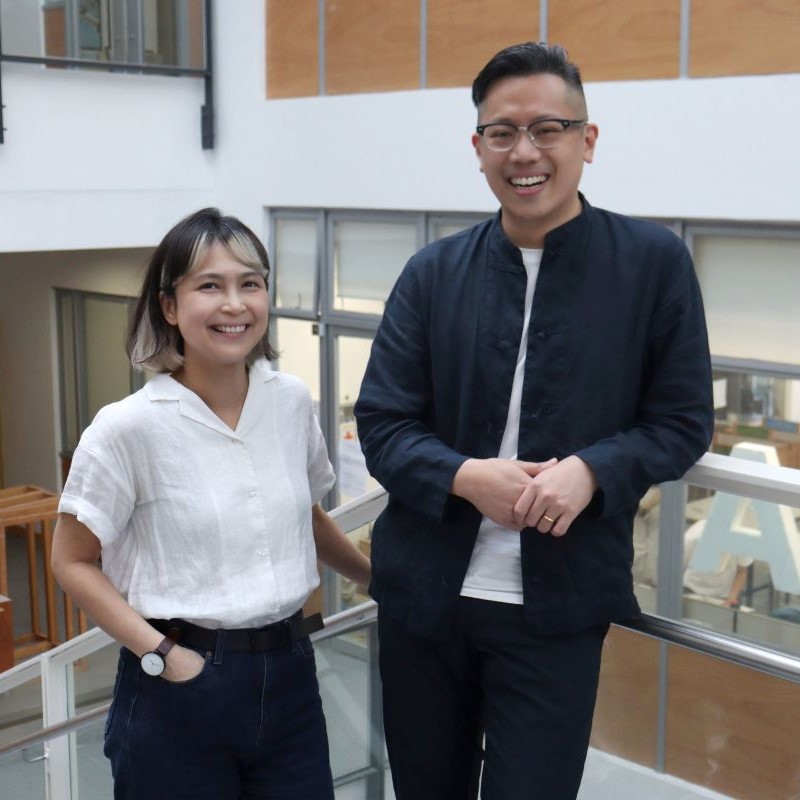
There is a certain level of objectivity in considering whether a society is a happy ageing society, such as walkability and green space. But it takes another level for golden agers to lead an active and enriching social life.

“The difference between ‘Building’ and ‘Architecture’ lies in the human touch of the latter,” chuckles Mo Kar Him, Assistant Professor of the School of Architecture, CUHK. Mo, in a chic navy blue Tang shirt jacket, quotes Le Corbusier, the pioneer and maestro of modernist architecture, to explicate his “way of architecture”.
He further highlights, “Architecture is not only a physical environment. It is an arena for ‘the interwork of souls between people and space’.”
Before moving on to discuss different levels of architecture, let’s get to know the affable duo — Mo and Rina. Both architects graduated from CUHK. Mo is now teaching at the School of Architecture of CUHK. Rina is an accountant-cum-architect who left a famous Swiss architectural firm in 2018 to join the CUHK Jockey Club Institute of Ageing, despite a hefty axe on the salary.
Why did the two young executives leap from their professions into research, especially in gerontology? They had even secured funding from CUHK Sustainable Knowledge Transfer Project Fund (S-KPF) to set up the social enterprise Happy Ageing Lab. How does architecture affect the health of the elderly? Can we age discerningly? What changes do Mo and Rina want to make?
Start: Walkable Hong Kong
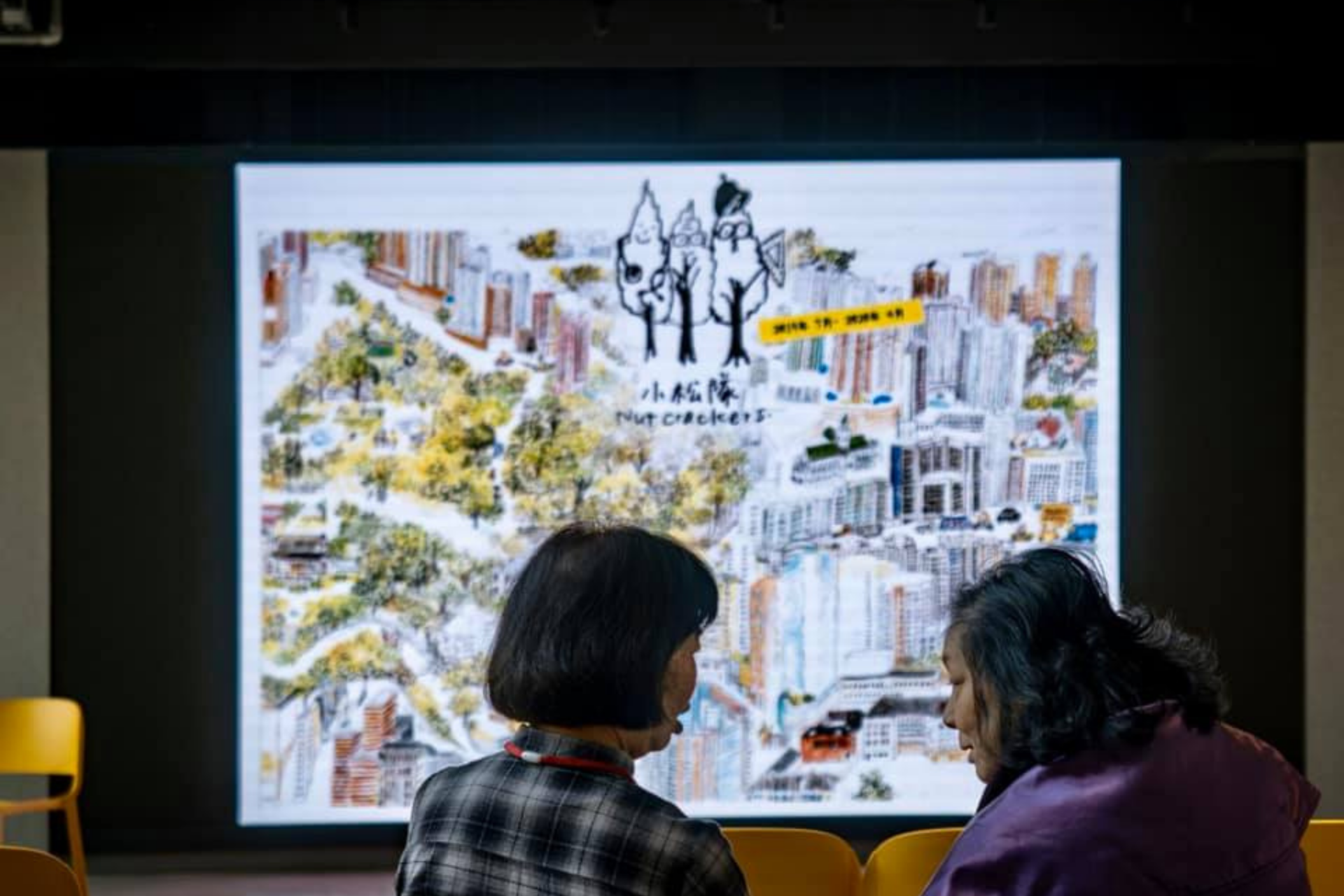
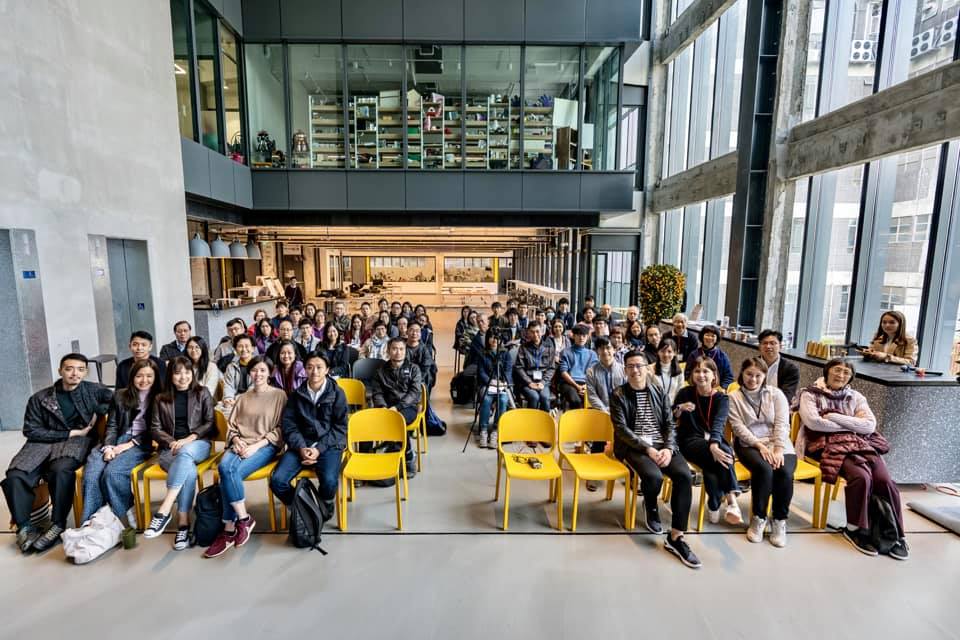
The idea of a social enterprise was conceived when Mo and Rina worked together at “Nutcrackers”. Nutcrackers advocates healthy ageing in Hong Kong. They recruit a group of elderly to learn about urban planning, architectural design, universal design and so on, then conduct place audits and share their end-user experience.
“The two-year project gathered a group of enthusiastic and knowledgeable senior citizens. So how can their voices be heeded to promote social change? This is what Happy Ageing Lab aims to do.” Mo points out the philosophy of the company.
Apart from philosophy, a social enterprise is also required of a business model. “We provide assessment on elderly-friendliness of architectural environments, for instance, whether the washrooms of a shopping mall are safe and easy to find. The accessibility of toilets can be a determining factor for elderly people to step outside their home.”
One Step at a Time
In the theory of startups, minimum viable product (MVP) refers to the basic version of a product with just sufficient features to launch to the market in order to collect user feedbacks. Mo’s team begins with “toilet” with a similar objective in mind.
“Toilet is small and manageable for measuring and comparing its performance. It is easier to bring about change and is actionable as it is small enough.” They plan to kick off the project in Tsuen Wan. “Tsuen Wan is an ideal trial area with a good mix of new and old communities. It is also conveniently connected and walkable, which is important for the elderly.”
The team hopes to share the assessment results with developers and property management companies, and that they will consider and follow up with the findings. “Sometimes I am wary that my wife would slip in a shopping mall washroom, not to mention the elderly. Designers and property management companies have to work hand in hand to solve the problem.” A caring guy indeed.
How are they going to disseminate opinions of the elderly participants? There are quite a number of social media channels that are popular with young people. KOLs can make significant noise. They plan to set up a KOL platform for golden-agers, and are now busy producing video clips for them to pass on their voices, opinions and insights.
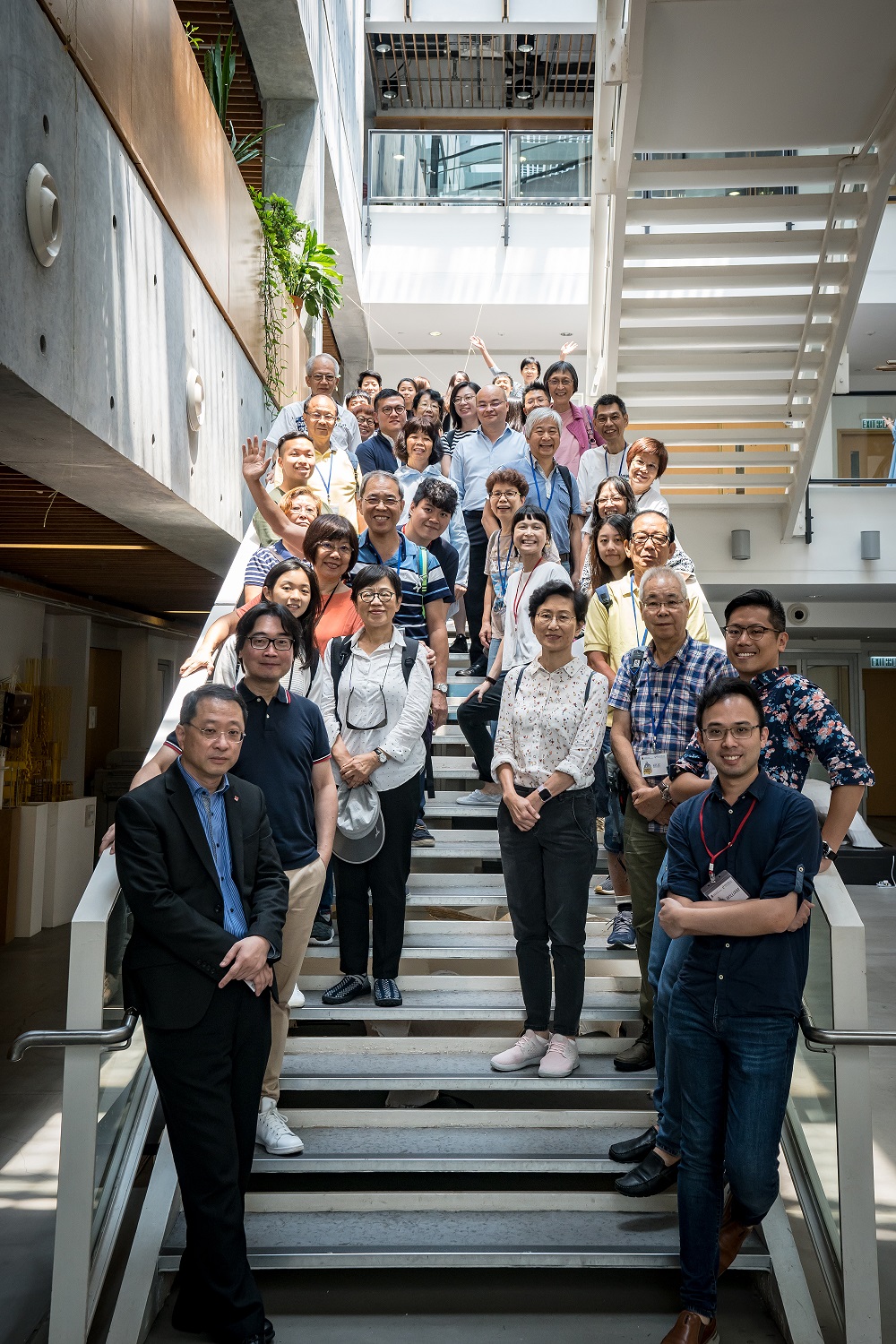
The Mature Student Way
There are three co-founders of Happy Ageing Lab, including William Sin, an expert in community development. The team has been in close partnership with a group of senior citizens. Rina, before joining CUHK, had been quite detached with users during her academic and career pursuits. She decided to quit and “do something meaningful that engage users.” What made her left the reputable Swiss architectural firm to join the Institute of Ageing?
“Upon completing the Tai Kwun project, I realised that I like preliminary research and design more. So I quitted my job and completed the professional exam. And started thinking why I was doing all this.” Rina, with a small strand of brightly-highlighted forelock, has a first undergraduate degree in Accounting. For the love of architecture, she spent another year in the UK studying architecture, and returned to Hong Kong as a mature student to complete her undergraduate degree in architecture at CUHK, and then a master of architecture.
“As a mature student, I was 10-plus years older than my peers. I hence often pondered about meaning.” And why did she chew over gerontology? This had to do with her personal experience.
As Rina was exploring what life had for her after her “naked” resignation, “My mom fell down the stairs and was admitted to the geriatrics ward of Ruttonjee Hospital. I was dismayed by the scene at the ward. Some patients were so skinny that their eyes bulged. Some could not close their jaws, lost all their teeth or muscle. Others whimpered all night due to all kinds of ailments.” Rina recounts in great length.
As such she realised perhaps her professional knowledge might be useful for the ageing population, which was receiving increasing attention as a social problem. After some diligent research, Rina knocked repeatedly on the door of CUHK Jockey Club Institute of Ageing to persuade Prof Jean Woo, the then Director of the Institute, to hire her. Prof Woo was at first hesitant about having Rina for the new post as its responsibilities were largely administrative. She was afraid that this would be a talent mismatch.
Rina’s persistence paid off and she got into the Institute. As soon as she was on board she did more than what was required, and hunted resources everywhere to create favourable conditions towards her goal. Rina made a significant contribution to the setting up of Nutcrackers — a cross-disciplinary project that connects the expertise of CUHK scholars in urban planning, architecture and medicine to promote Hong Kong as a “happy-ageing” society. Her longtime friend Mo was invited to join the team.
Back to the Academia
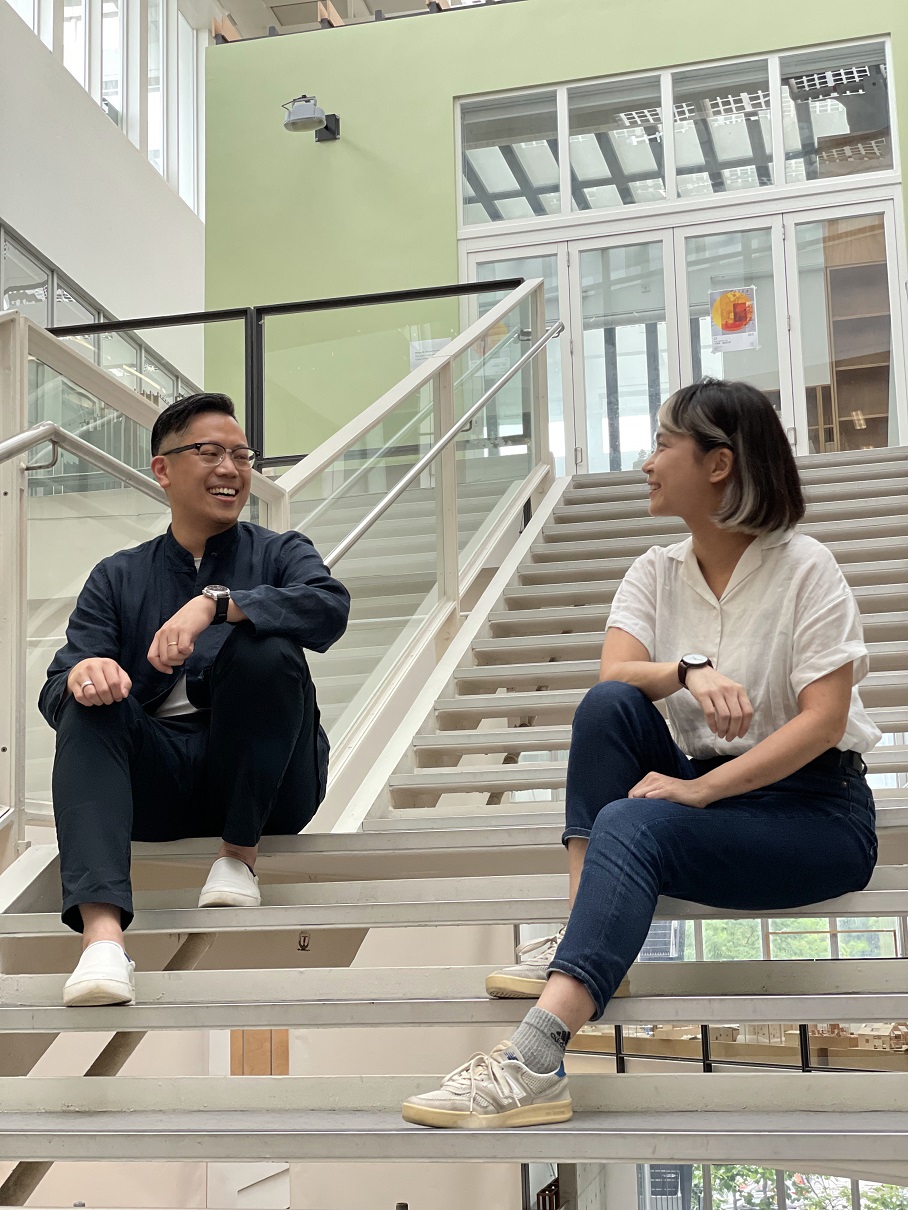
“When I started studying architecture, I wanted to change the world with architecture. This could be a reflection of my class monitor or teacher’s helper complex,” Mo chuckles again.
With a passion for design and art, and the dream to change the world, Mo had worked in policy research related positions after completing his PhD in architecture at CUHK. But things did not turn out as he expected. “I was very much disconnected from the community and people. At the same time there was certain kind of estrangement with different parties. It was quite depressing…haha.”
He hence decided to return to research and teaching. “I hope to pass on some good values to the next generation.” As a co-founder of Happy Ageing Lab, he often joins working groups on-site to listen to the opinions of the elderly on communal facilities.
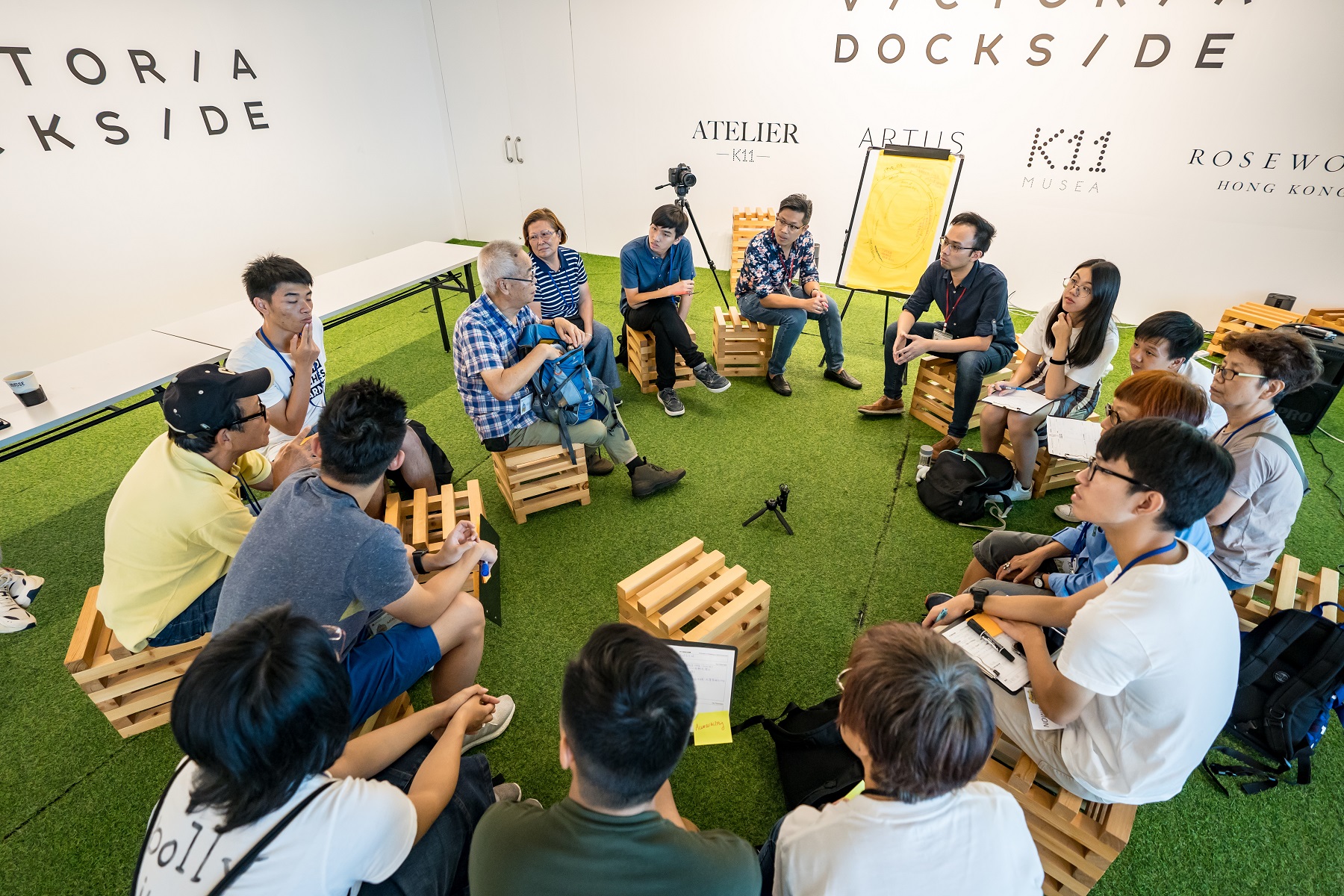
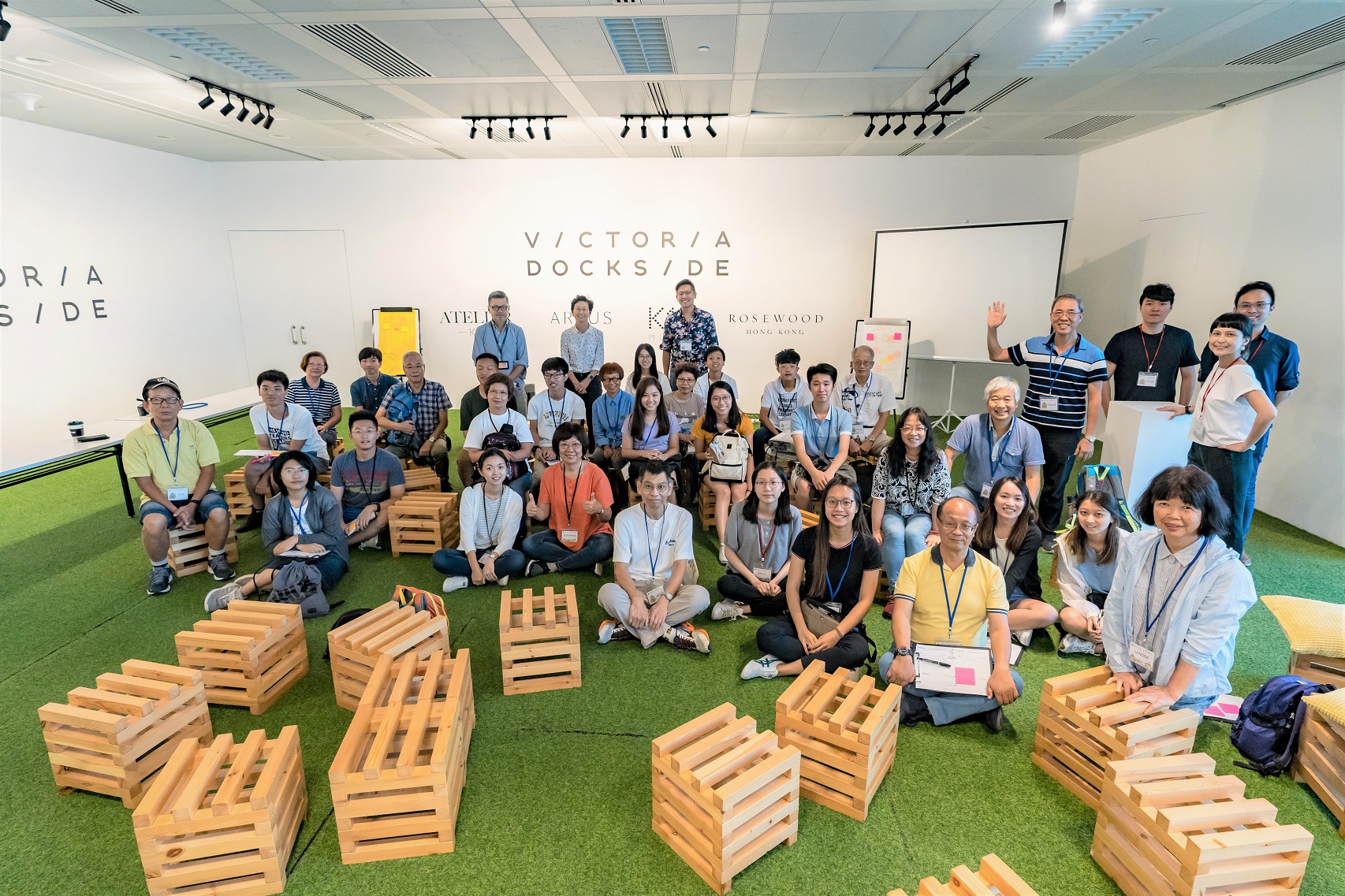
What Makes a Happy Ageing Society?
“There is a certain level of objectivity in considering whether a society is a happy ageing society, such as walkability and green space. But it takes another level for golden agers to lead an active and enriching social life. Loneliness of the elderly is a serious social problem in Hong Kong. Many of them are reluctant to step outside their home, especially those who are chronically ill. Designing community environment is thus very important. For instance, will a carefully designed corridor encourage the elderly to stay outside longer?” Mo reckons that sociability has greater impact on the health of the elderly than tangible conditions.
Enhancing social interaction via built environment design is one of the key objectives in Community Development. User participation is salient in the design process. “Participatory design and co-design, which emphasise engaging end-users, are catching on big in recent years. Such engagement was absent during my study or at my previous jobs,” says Mo.
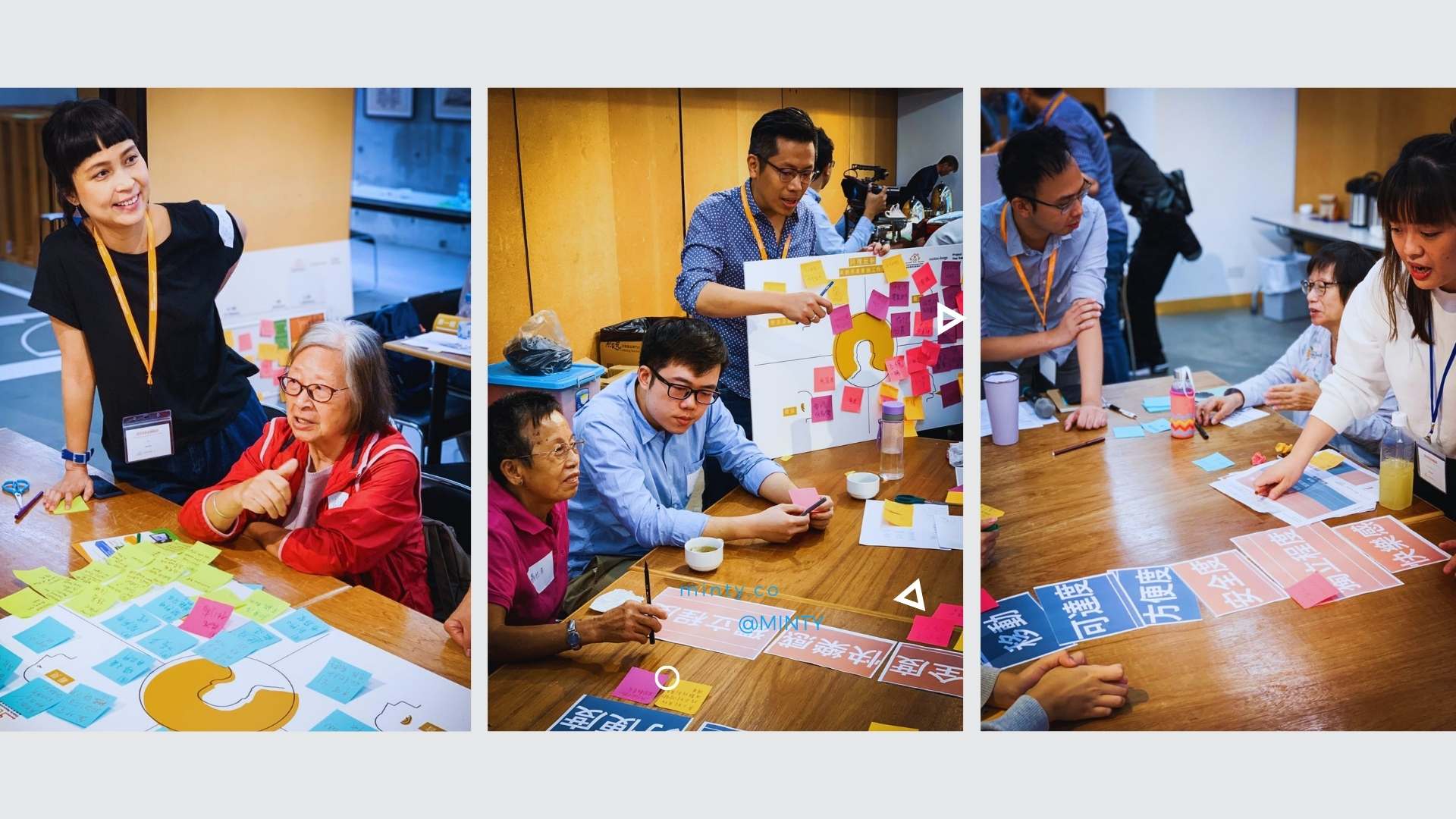
Human Touching Journey
Mo continues to point out how good architecture enables the interwork of souls between people and space. As a Christian, he shares a touching experience in Korea. “Rocks and forests were configured as a prayer garden of natural environment. It was the first time that I cried for visiting a place. There was an open space in the garden, where people played volleyball, worshipped or prayed. It was such a beautiful vista. You don’t cry when you see people play volleyball in Victoria park, do you?”
Rina the contemplator jokes that she only cries when she meets Crowd Lu, a Taiwanese signer-songwriter. She has similar experience at Wo Hop Shek Cemetery to share too. “In front of the Wo Hop Shek Architectural Services Building, there was a coffin in the front, behind which were glass panes and then bamboo trees. As sunlight sifts down, for the first time I was in awe how great architectural design creates an ambience that comforts and soothes when you need it,” applauds Rina, who seems to be stirred particularly by life and death matters.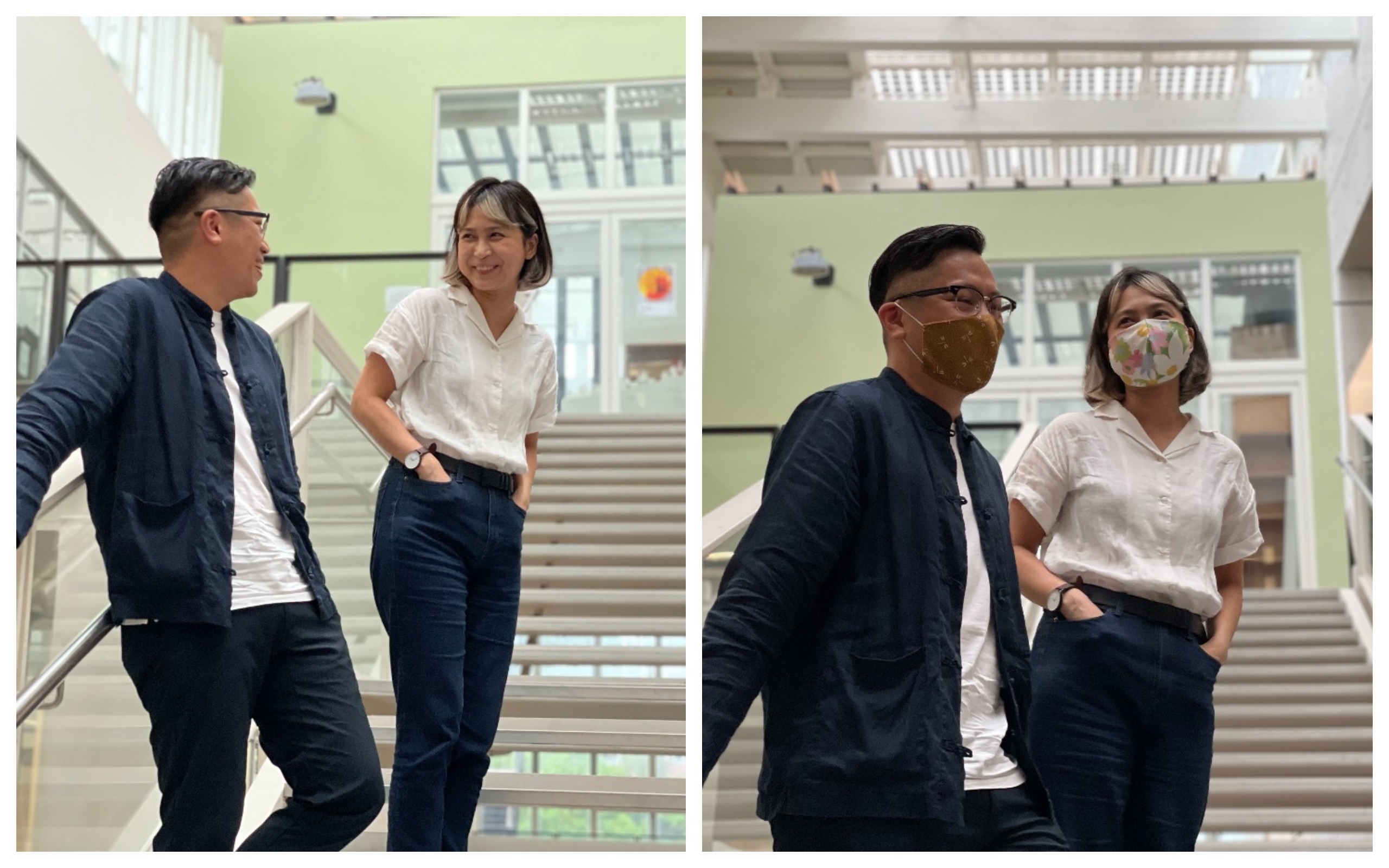
“It was not an ambience that can be easily created. This is what makes a maestro. Architects have to be observant. Participatory design is important in a way that it delivers user opinions to the industry, “ Rina accentuates.
“Architecture is not only a photo by the architect. It is the vessel that carries feelings of the people at any particular moment. Whether sad, happy or celebrating, the experience belongs to the users. In the past, architectural design process tend to exclude users. What can the outcome possibly carry?” Mo concurs that user participation is indispensable in the early stage of a good architectural design.
Happy Ageing Lab envisions a beautiful, generational-inclusive city. Towards the end of the interview, we notice the fashionable and niftily tailored masks that Mo and Rina are wearing. “It’s handmade by an elderly in Nutcrackers, with the cloth that I bought from Japan,” says Rina jovially. Will this be the prototype of a new product of Happy Ageing Lab?
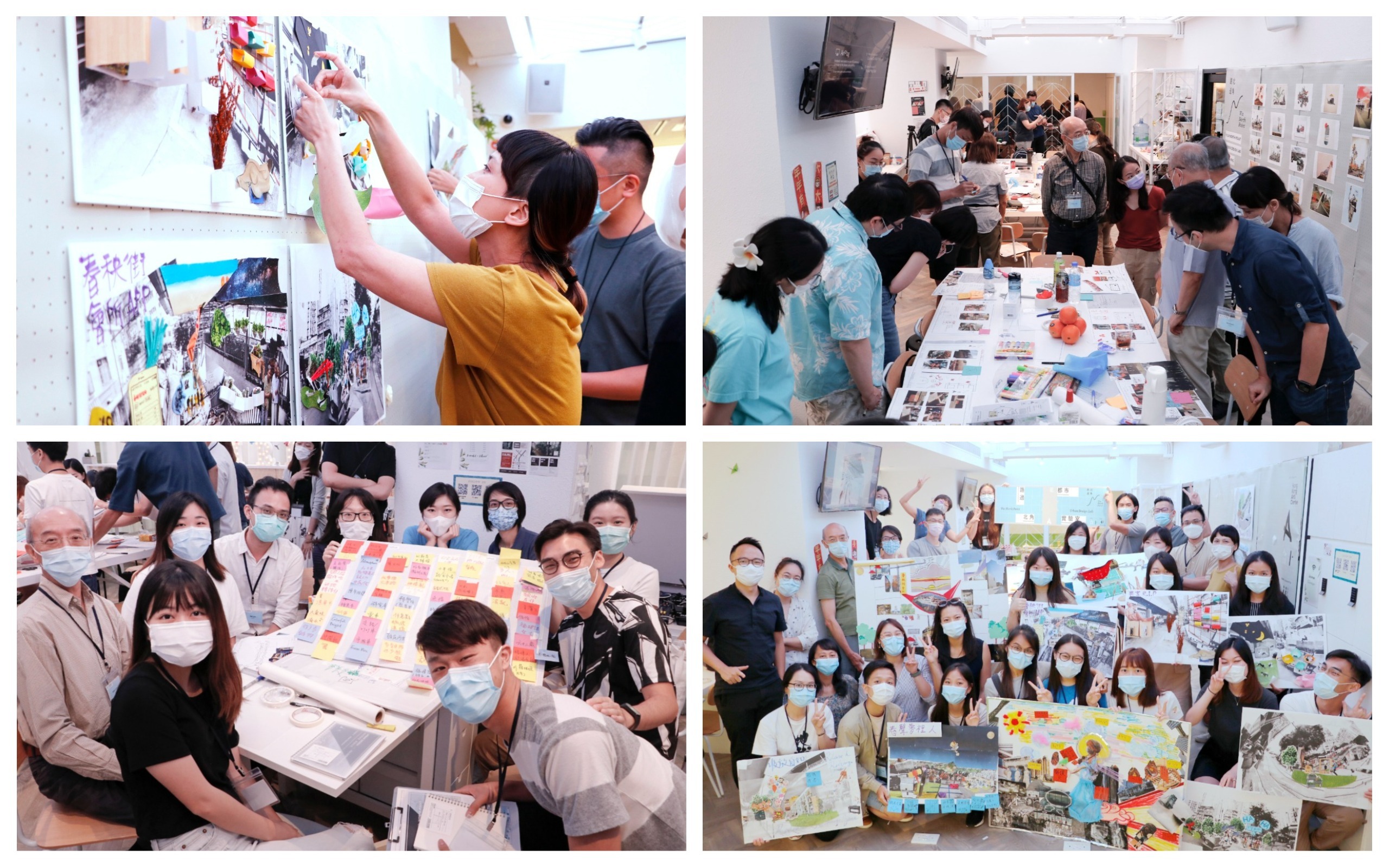

【Scholarly keyword】Narrative Design
Initially trained as an accountant, Rina was madly in love with architecture thanks to an instructor’s compelling storytelling skill. “We had many hands-on experiences with narrative design. We would, for instance, dissect a mobile phone in class to deconstruct the function, meaning, human interaction of each part. Each module could spark great discussions.”
“Architecture is full of metaphors. Symbols and configuration of space can create imageries that are not only functional but also artistic and practical,” Mo continues to explain what are “storytelling” designs.


